Abstract
Amphotericin B at the concentration normally used for routine suppression of fungal infection in tissue culture strongly inhibits the proliferation of NS1/1 myeloma cells and the LPS-induced activation of B lymphocytes from mouse spleen. The proliferation of T lymphocytes induced by concanavalin A (Con A) was less affected by the antibiotic, indicating that B-lymphocyte proliferation was preferentially inhibited. The unexpected sensitivity of B-lymphoid cells to amphotericin B precludes its use as an anti-fungal agent in the production of hybridomas from fusions between these cells.
Full text
PDF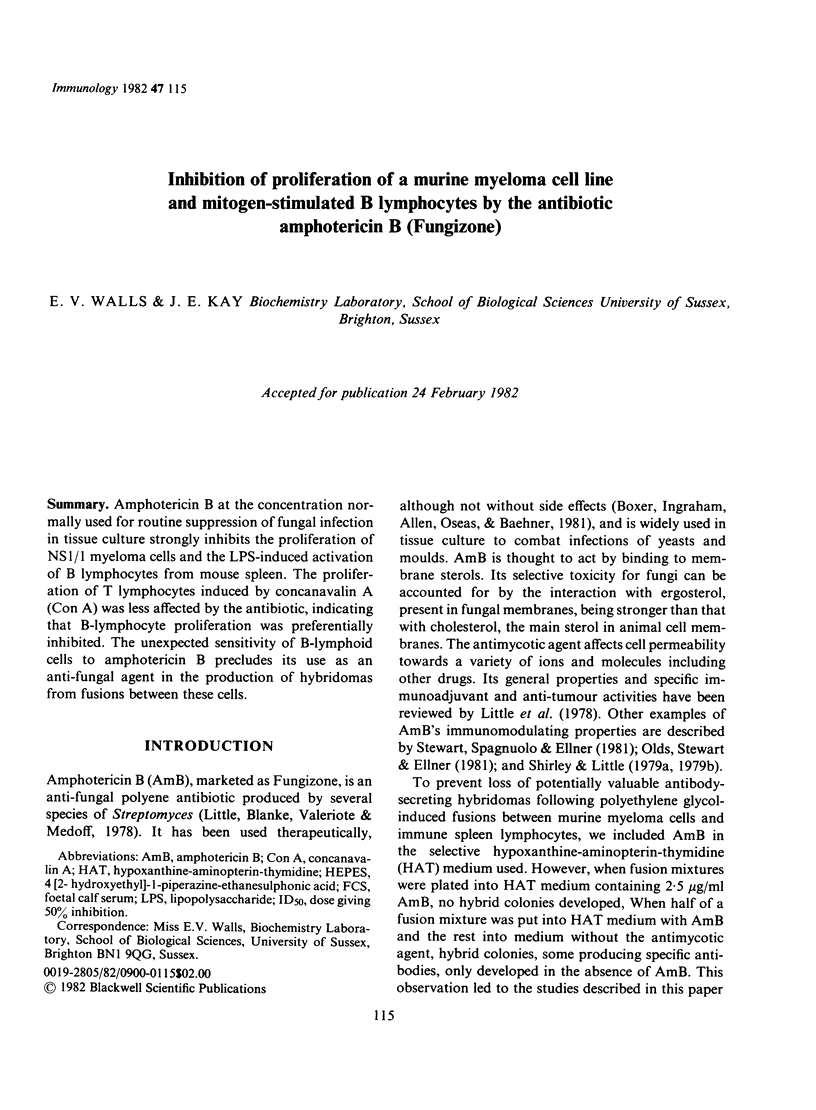
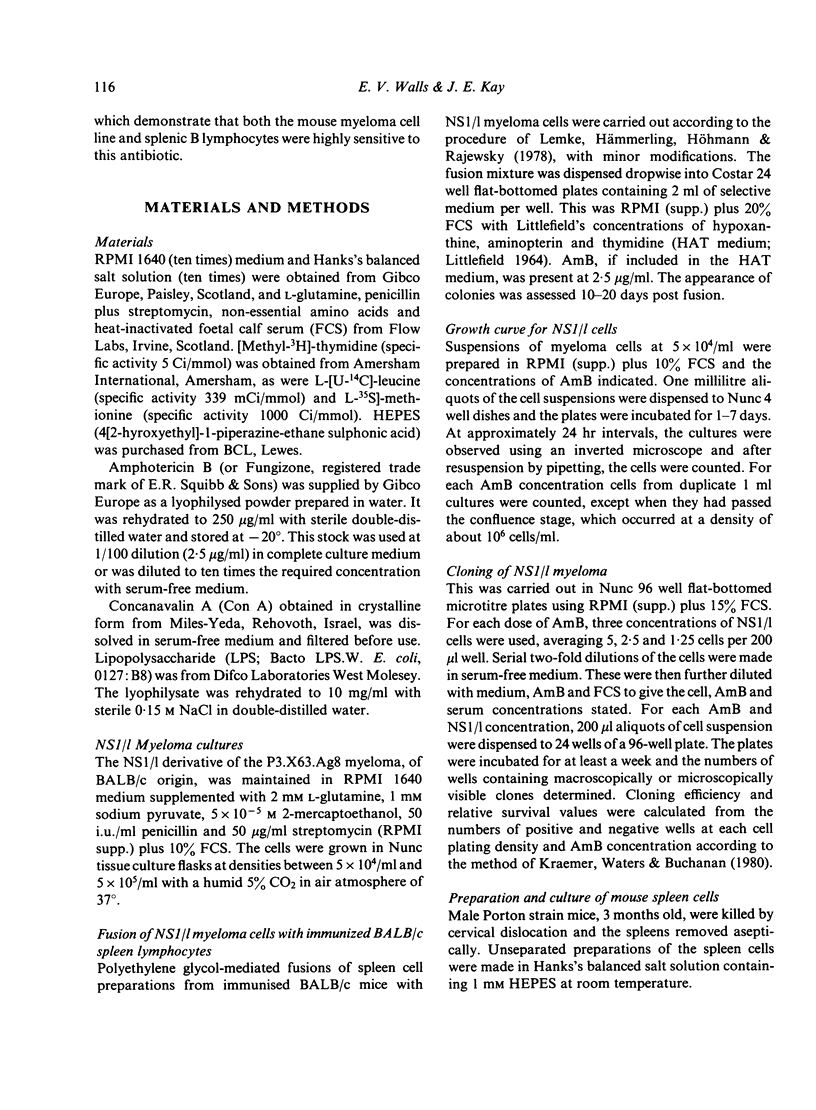
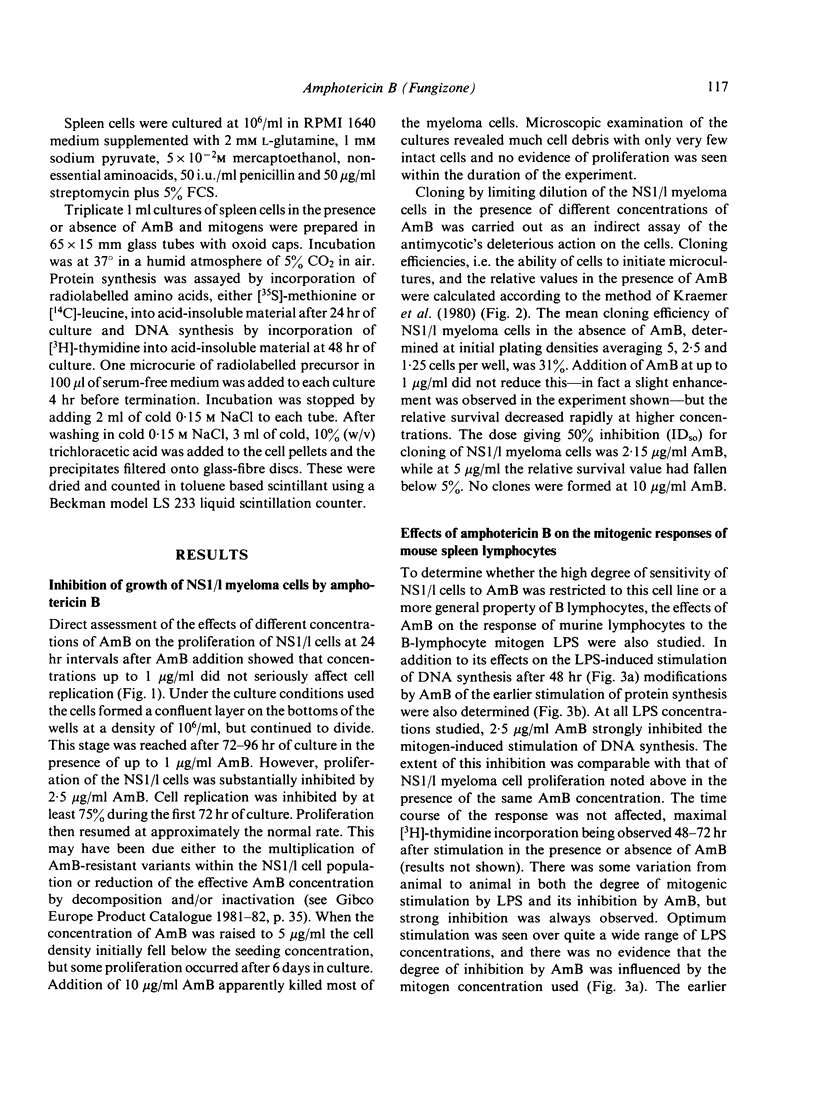
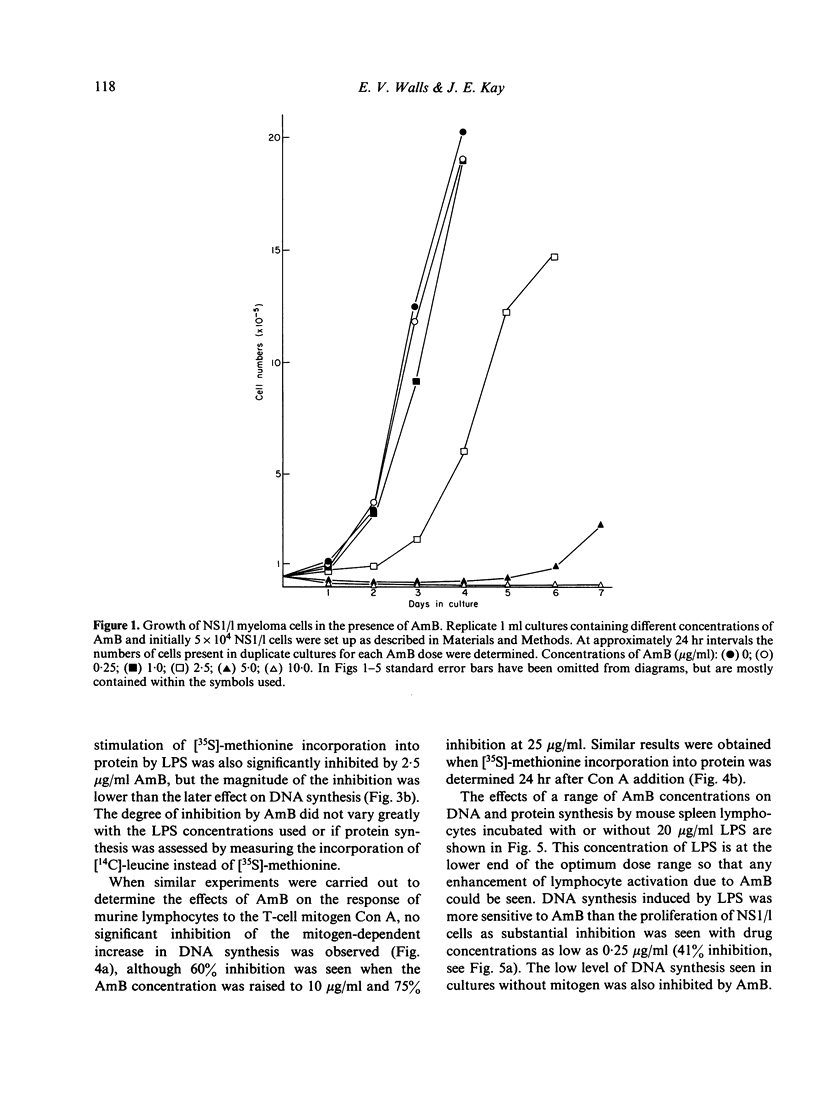

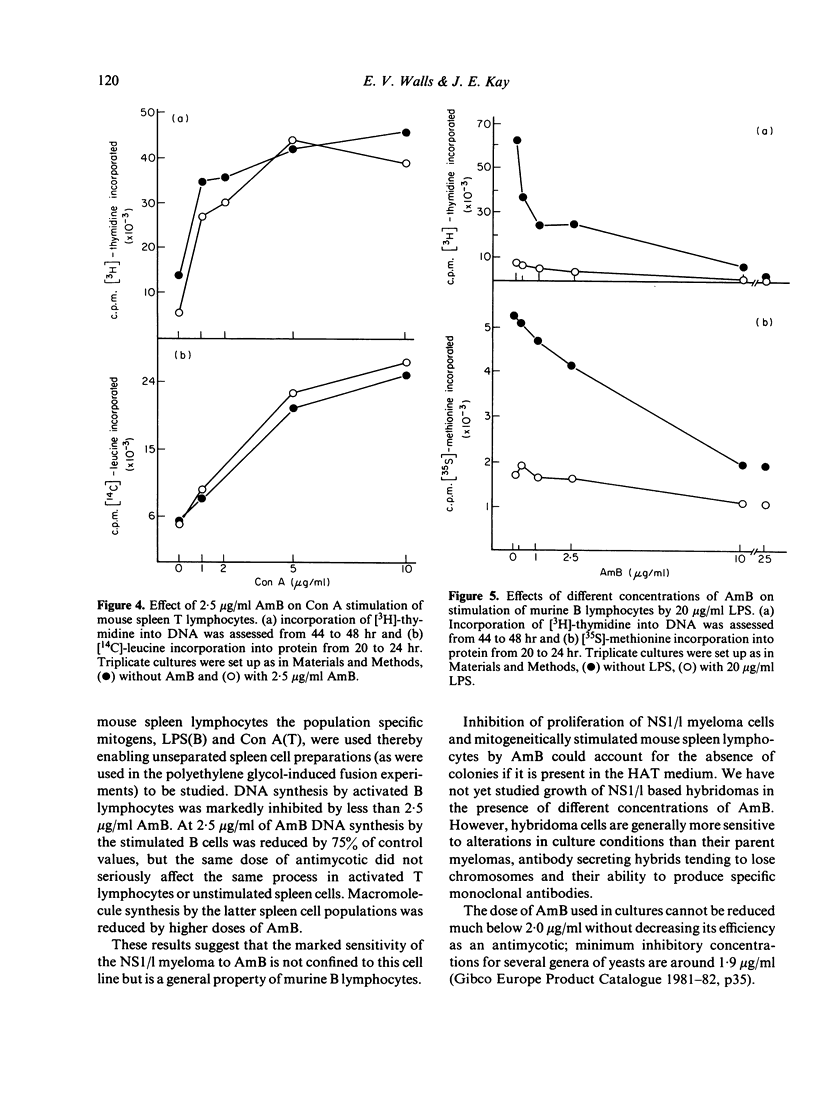
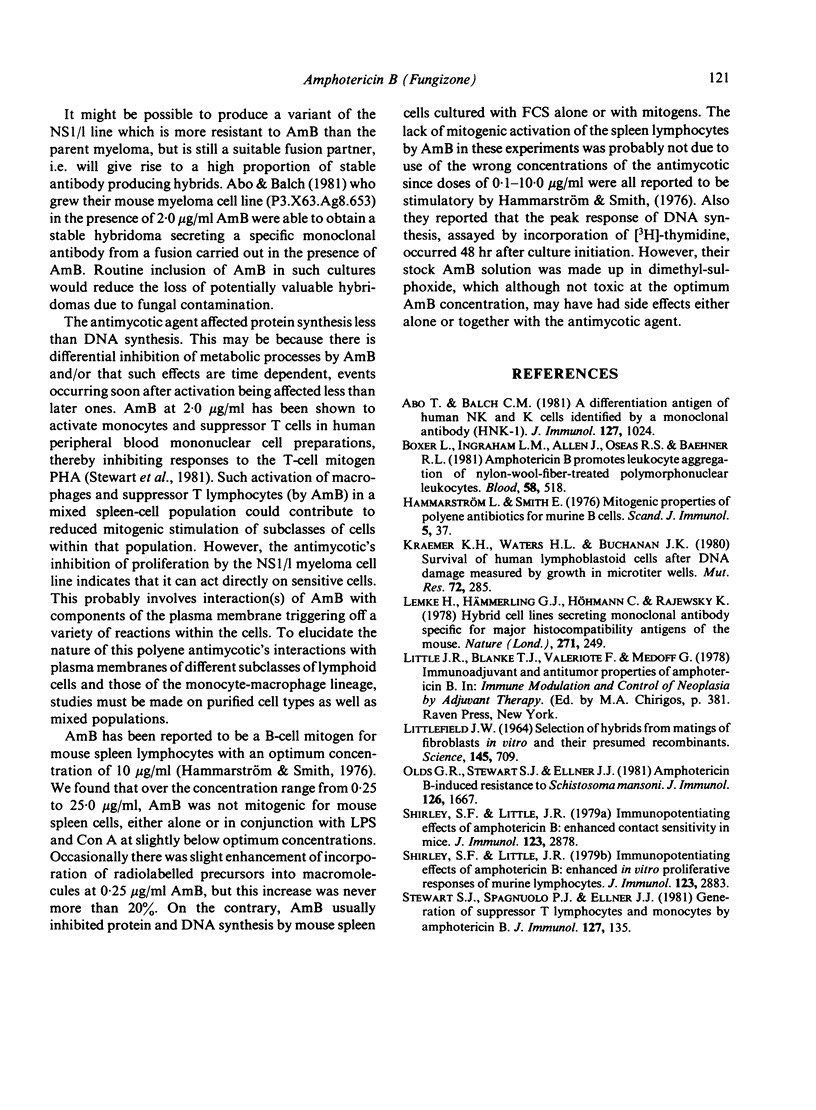
Selected References
These references are in PubMed. This may not be the complete list of references from this article.
- Abo T., Balch C. M. A differentiation antigen of human NK and K cells identified by a monoclonal antibody (HNK-1). J Immunol. 1981 Sep;127(3):1024–1029. [PubMed] [Google Scholar]
- Boxer L. A., Ingraham L. M., Allen J., Oseas R. S., Baehner R. L. Amphotericin-B promotes leukocyte aggregation of nylon-wool-fiber-treated polymorphonuclear leukocytes. Blood. 1981 Sep;58(3):518–523. [PubMed] [Google Scholar]
- Hammarström L., Smith E. Mitogenic properties of polyene antibiotics for murine B cells. Scand J Immunol. 1976;5(1-2):37–43. doi: 10.1111/j.1365-3083.1976.tb02990.x. [DOI] [PubMed] [Google Scholar]
- Kraemer K. H., Waters H. L., Buchanan J. K. Survival of human lymphoblastoid cells after DNA damage measured by growth in microtiter wells. Mutat Res. 1980 Sep;72(2):285–294. doi: 10.1016/0027-5107(80)90043-3. [DOI] [PubMed] [Google Scholar]
- LITTLEFIELD J. W. SELECTION OF HYBRIDS FROM MATINGS OF FIBROBLASTS IN VITRO AND THEIR PRESUMED RECOMBINANTS. Science. 1964 Aug 14;145(3633):709–710. doi: 10.1126/science.145.3633.709. [DOI] [PubMed] [Google Scholar]
- Lemke H., Hammerling G. J., Hohmann C., Rajewsky K. Hybrid cell lines secreting monoclonal antibody specific for major histocompatibility antigens of the mouse. Nature. 1978 Jan 19;271(5642):249–251. doi: 10.1038/271249a0. [DOI] [PubMed] [Google Scholar]
- Olds G. R., Stewart S. J., Ellner J. J. Amphotericin B-induced resistance to Schistosoma mansoni. J Immunol. 1981 May;126(5):1667–1670. [PubMed] [Google Scholar]
- Shirley S. F., Little J. R. Immunopotentiating effects of amphotericin B. I. Enhanced contact sensitivity in mice. J Immunol. 1979 Dec;123(6):2878–2882. [PubMed] [Google Scholar]
- Shirley S. F., Little J. R. Immunopotentiating effects of amphotericin B. II. Enhanced in vitro proliferative responses of murine lymphocytes. J Immunol. 1979 Dec;123(6):2883–2889. [PubMed] [Google Scholar]
- Stewart S. J., Spagnuolo P. J., Ellner J. J. Generation of suppressor T lymphocytes and monocytes by amphotericin B. J Immunol. 1981 Jul;127(1):135–139. [PubMed] [Google Scholar]


